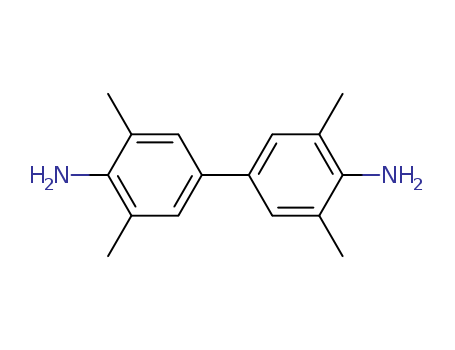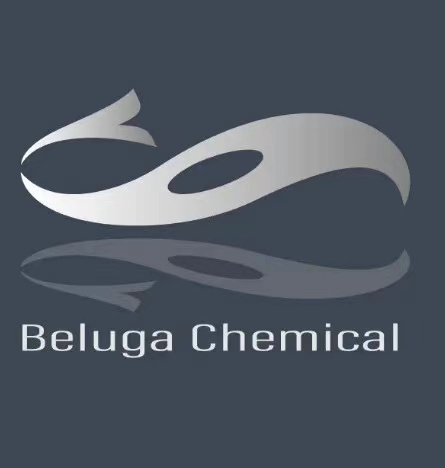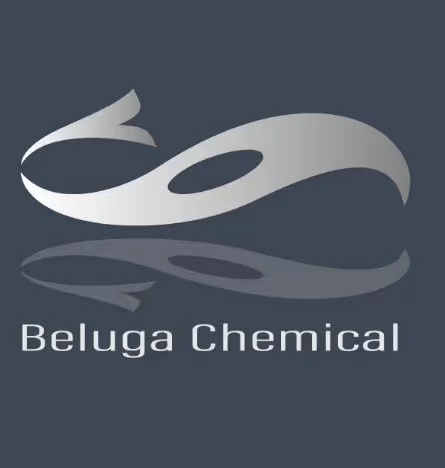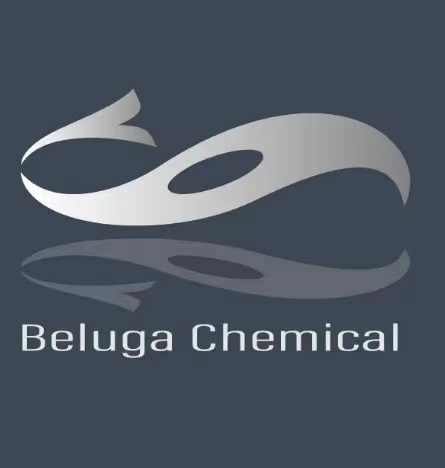
3,3',5,5'-Tetramethylbenzidine 54827-17-7
- CasNo:54827-17-7
- Molecular Formula:
- Purity:
- Molecular Weight:
Product Details
54827-17-7 Properties
- Molecular Formula:C16H20N2
- Molecular Weight:240.348
- Appearance/Colour:White or light yellow solid
- Melting Point:168-171 °C(lit.)
- Refractive Index:1.5519 (estimate)
- Boiling Point:368.623 °C at 760 mmHg
- PKA:4.49±0.10(Predicted)
- Flash Point:210.8 °C
- PSA:52.04000
- Density:1.071 g/cm3
- LogP:4.91400
54827-17-7 Usage
Description
Tetramethylbenzidine(TMB) is a chromogenic substrate used in staining procedures in immunohistochemistry as well as being a visualising reagent used in enzyme-linked immunosorbent assays (ELISA). It is a white solid that forms a pale blue-green liquid in solution with ethyl acetate. Tetramethylbenzidine is degraded by sunlight and by fluorescent lights. It?is a soluble chromogen substrate for horseradish peroxidase detection systems. Tetramethylbenzidine is recommended for ELISA procedures.
Chemical Properties
Tetramethylbenzidine is sensitive to prolonged exposure to light. Neutralizes acids in exothermic reactions to form salts plus water.Tetramethylbenzidine may be incompatible with isocyanates, halogenated organics, peroxides, phenols (acidic), epoxides, anhydrides, and acid halides. Flammable gaseous hydrogen may be generated in combination with strong reducing agents, such as hydrides.
Reactions
TMB can act as a hydrogen donor for the reduction of hydrogen peroxide to water by peroxidase enzymes such as horseradish peroxidase. Oxidation of TMB Shows the oxidation of 3,3′,5,5′-tetramethylbenzidine (TMB) to 3,3',5,5'-tetramethylbenzidine diimine The resulting diimine causes the solution to take on a blue colour, and this colour change can be read on a spectrophotometer at the wavelengths of 370 and 650 nm.
Carcinogenicity
It is not known if Tetramethylbenzidine is carcinogenic and the evidence is contradictory: Tetramethylbenzidine is not mutagenic by the Ames test, and did not induce formation of tumors in a single-arm study of 24 rats. On that evidence, it has been used as a replacement for carcinogenic compounds such as benzidine and o-phenylenediamine.
storage
Keep as concentrated solution, aliquot and store at 4oC. Do not freeze.
Chemical Properties
White or light yellow solid, odorless, tasteless, insoluble in water, easily soluble in acetone, ether, dimethyl sulfoxide, dimethylformamide and other organic solvents.
Uses
3,3,5,5-Tetramethyl benzidine is used as a reagent in a sensitive staining procedure for the detection of low levels of heme-associated peroxidase activity of cytochrome P-450 on SDS-polyacrylamide or agarose gel; non-carcinogenic substitute for benzidine as reagent for the detection of blood and determination of hemoglobin content.
Uses
3,3′,5,5′-Tetramethylbenzidine may be used as a substrate for the analysis of diclofenac in water samples and dextromethorphan and its major metabolite dextrorphan in urine samples using enzyme-linked immunosorbent assay (ELISA) and gas chromatography coupled to mass spectrometry (GC-MS).
Application
3,3′,5,5′-Tetramethylbenzidine (TMB) is a chromogenic substrate used in staining procedures in immunohistochemistry as well as being a visualising reagent used in enzyme-linked immunosorbent assays (ELISA). The substrate produces a soluble end product that is pale blue in color and can be read spectrophotometrically at 370 or 620-650 nm. The TMB reaction may be stopped with 2 M H2SO4 (resulting in a yellow color), and read at 450 nm. A sensitive and specific reagent for the detection of blood, assay of hemoglobin, assay of peroxidases.
Preparation
Synthesis of 3,3',5,5'-Tetramethylbenzidine: Using 2,6-dimethylaniline as raw material, through activation, oxidative coupling and purification, pure 3,3,5,5-tetramethylbenzidine was obtained Methylbenzidine, the total yield is 65%.
General Description
3,3',5,5'-tetramethylbenzidine appears as pale yellow crystals or off-white powder. (NTP, 1992)
Air & Water Reactions
Insoluble in water.
Reactivity Profile
Tetramethylbenzidine is sensitive to prolonged exposure to light . Neutralizes acids in exothermic reactions to form salts plus water. May be incompatible with isocyanates, halogenated organics, peroxides, phenols (acidic), epoxides, anhydrides, and acid halides. Flammable gaseous hydrogen may be generated in combination with strong reducing agents, such as hydrides.
Fire Hazard
Flash point data for Tetramethylbenzidine are not available, however, Tetramethylbenzidine is probably combustible.
Biochem/physiol Actions
3,3′,5,5′-Tetramethylbenzidine/TMB can be used as a chromogen to increase the progression of product obtained in peroxidase reaction. In food and environmental decontamination procedures, TMB can be used in in?situ free available chlorine (FAC) monitoring of chlorite-based sanitizers.
54827-17-7 Relevant articles
Enzyme mimicking inorganic hybrid Ni@MnO2 for colorimetric detection of uric acid in serum samples
Pal, Jaya,Pal, Tarasankar
, p. 83738 - 83747 (2016)
Reliable and inexpensive detection of uric acid in the absence of any peroxide or enzyme is very challenging for the development of a new cost effective clinical method. Herein, we report an easy, cost effective and nonenzymetic method for selective detection and quantification of uric acid using 3,3′,5,5′-tetramethylbenzidine (TMB) and a Ni@MnO2 hybrid nanomaterial. The ultra-long porous core-shell Ni@MnO2 hybrid nanomaterial, obtained from a simple redox transformation reaction between a prickly nickel nanowire and KMnO4 solution, is reported for the first time. The growth mechanism is studied from time-dependent FESEM and TEM images. The hybrid nanomaterial exhibited intrinsic oxidase-like activity that helps catalytic oxidation of TMB (colourless) to a blue colored product which becomes colourless in the presence of uric acid. Moreover, this colorimetric method has been exploited for the assay of serum uric acid in real samples. Our proposed method can detect as low as 0.24 μM of uric acid with a linear range from 1 to 40 μM. Therefore, we believe that this method would be useful for the detection of uric acid in clinical laboratory.
Versatile, concise and convenient process for the commercial scale preparation of highest pure 3,3'5,5'-Tetramethylbenzidine (TMB) and its salts, a chromogenic substrate used in staining procedures in immunohistochemistry and visualizing reagent in enzyme-linked immunosorbent assays
-
Paragraph 0031-0032, (2021/04/23)
The present invention relates to a process for the preparation of 3,3′,5,5′-Tetramethylbenzidine represented by formula I, and processes for the preparation of intermediates used in the preparation of 3,3′,5,5′-Tetramethylbenzidine.
Synthesis method of biochemical preparation TMB
-
Paragraph 0057-0059, (2018/03/26)
The invention discloses a synthesis method of a biochemical preparation TMB. The synthesis method includes following steps: synthesizing 1,2, 2', 6, 6'-azo tetratoluidine-N, N-dioxide; synthesizing 1,2, 2', 6, 6'-tetramethyl diphenylhydrazine; synthesizing 3,TMB (1/2)H2SO4; preparing 4,TMB 2HCl; preparing TMB. The synthesis method is simple in synthesis route, cheap and easy-to-obtain in raw material, low in synthesis cost and high in yield.
A 3, 3 ', 5, 5' - tetramethyl benzidine and its hydrochloride synthesis method (by machine translation)
-
Paragraph 0020-0022; 0024; 0025, (2019/01/08)
The present invention provides a synthetic 3, 3 ', 5, 5' - tetramethyl benzidine and its hydrochloride method, which belongs to the technical field of organic synthesis. In order to 2, 6 - dimethyl aniline as the raw material, first of all through the potassium permanganate oxidation of 2, 2 ', 6, 6' - tetramethyl azobenzene, then concentrated hydrochloric acid and zinc powder for the one-step method of 2, 2 ', 6, 6' - tetramethyl azobenzene reduction, rearrangement, and through processing and getting the 3, 3 ', 5, 5' - tetramethyl benzidine and its hydrochloride. In the present invention the used raw materials are cheap and easily obtained, operation process is simple and convenient, mild reaction conditions, higher yield. (by machine translation)
Diverse applications of TMB-based sensing probes
Huang, Li,Cao, Ying-Juan,Sun, Xiang-Ying,Liu, Bin,Shen, Jiang-Shan
supporting information, p. 5667 - 5676 (2018/08/17)
Extending the research on 3,3′,5,5′-tetramethylbenzidine (TMB) and its derivatives in analytical chemistry is important, considering that TMB is widely used as an enzyme catalytic substrate. In this work, two TMB derivatives, TMBS and TMBB, were synthesized via a facile and one-step condensation reaction between the -NH2 group of TMB and the -CHO group of salicylaldehyde or benzaldehyde. Because at low pH the two Schiff base compounds can release TMB which can emit strong fluorescence, the probes could show dual-modal signal responses, fluorescence and UV-vis absorption, towards the pH. Practical applications of pH sensing in Chinese rice vinegar and lemon juice samples were successfully demonstrated. On the basis of these findings, a catalytic chromogenic reaction was developed to monitor the pH with the naked eye, too. Furthermore, considering the chemical equilibrium reaction between CO2 and H2O and that glucose oxidase (GOD) can catalyse the dehydrogenation and oxidation reaction of β-d-glucose to produce gluconic acid, both of which can result in lowering the pH values of the two Schiff base systems, highly sensitive and selective dual-modal sensing systems for detecting CO2 and β-d-glucose have also been successfully established. Therefore, the two synthesized TMB derivatives can demonstrate their robust application potential.
54827-17-7 Process route
-

-
29418-31-3
1,2-Bis(2,4-dimethylphenyl)diazene

-

-
54827-17-7
3,3',5,5'-tetramethylbenzidine
| Conditions | Yield |
|---|---|
|
With
hydrogenchloride; zinc;
In
water; ethyl acetate;
at 20 ℃;
|
96% |
|
With
ammonium chloride; zinc;
In
methanol; water;
at 20 ℃;
for 6h;
Reflux;
|
85 g |
-

-
3,3’,5,5’-tetramethylbenzidine dihydrochloride

-

-
54827-17-7
3,3',5,5'-tetramethylbenzidine
| Conditions | Yield |
|---|---|
|
With
sodium hydroxide;
In
methanol;
at 50 ℃;
for 1h;
Inert atmosphere;
|
72.4% |
54827-17-7 Upstream products
-
80387-68-4

2-methylindole-3-carboxaldehyde 2,6-dimethylphenylhydrazone
-
603-77-0

(2,6-dimethylphenyl)hydrazine
-
24596-19-8

4-bromo-2,6-dimethylphenylamine
-
24596-18-7

4-chloro-2,6-dimethylaniline
54827-17-7 Downstream products
-
1574293-63-2

N,N'-bis(1-(3-(1-mesityliminoethyl)pyridin-2-yl)ethylidene)tetramethylbenzidine
-
1584801-40-0

C52H56Cl4Fe2N6
-
1574293-43-8

N,N'-bis(1-(3-(1-(2,6-diethylphenylimino)ethyl)pyridin-2-yl)ethylidene)tetramethylbenzidine
-
1574293-42-7

N,N'-bis(1-(6-(1-(2,6-dimethylphenylimino)ethyl)pyridin-2-yl)ethylidene)-3,5,3',5'-tetramethylbenzidine








